Perhaps the worst letdown in a string of Cowboys playoff misfortunes caused Jerry Jones to make Mike McCarthy a rare lame-duck HC and stall on a Dak Prescott extension. The longtime owner received steady criticism for letting the Prescott and CeeDee Lamb situations fester throughout the offseason, one that otherwise featured few veteran augmentations.
Rookies became needed to fill holes along Dallas’ offensive line, and constant questions about how the team plans to assemble a backfield came out. As usual, however, the Cowboys kept it interesting as they remain on the job of trying to end a near-30-year NFC championship game drought.
Extensions and restructures:
- Reached four-year, $136MM extension ($67MM guaranteed) with WR CeeDee Lamb
- Restructured QB Dak Prescott‘s contract, creating $4MM in cap space
- Restructured G Zack Martin‘s deal, creating nearly $13MM in cap space
With Micah Parsons under contract through 2025 via the fifth-year option, the Cowboys’ three-headed contract quagmire became a Lamb-Prescott matter as this offseason progressed. In Cowboys fashion, negotiations with each generated numerous headlines. One holdout ensued. But the team did reach a resolution with one of the two standouts, moving first to pay Lamb after his first-team All-Pro season.
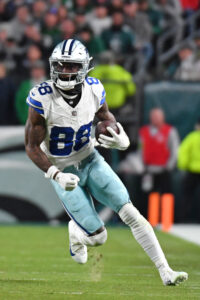 Shifting to the Cowboys’ go-to performer after the 2022 Amari Cooper trade, Lamb led the NFL in receptions last season and broke Michael Irvin‘s single-season records for catches and yards by tallying 135 grabs and 1,749 yards. Serious extension talks did not pick up until training camp. Lamb surfaced as an extension candidate in 2023, and it would have been cheaper to extend him then. Per COO Stephen Jones, Lamb was not interested in an extension in 2023. Whatever the case may be, the 25-year-old wideout enhanced his value by both dominating in 2023 and waiting for other receivers to move the market well past $30MM per year.
Shifting to the Cowboys’ go-to performer after the 2022 Amari Cooper trade, Lamb led the NFL in receptions last season and broke Michael Irvin‘s single-season records for catches and yards by tallying 135 grabs and 1,749 yards. Serious extension talks did not pick up until training camp. Lamb surfaced as an extension candidate in 2023, and it would have been cheaper to extend him then. Per COO Stephen Jones, Lamb was not interested in an extension in 2023. Whatever the case may be, the 25-year-old wideout enhanced his value by both dominating in 2023 and waiting for other receivers to move the market well past $30MM per year.
Exiting the 2023 offseason, only Tyreek Hill had secured a $30MM-per-year deal at wide receiver. Hill’s pact also deceived, as a phony final-year salary propped up the AAV. Lamb and Justin Jefferson sought legit structures, and by the time Dallas’ WR1 came to the table, three other wideouts — Jefferson, A.J. Brown, Amon-Ra St. Brown — had moved past $30MM per annum. Jefferson’s $35MM-per-year deal that included $110MM guaranteed and $88.7MM guaranteed at signing played the biggest role in Lamb negotiations, just as it has in Ja’Marr Chase‘s Bengals talks.
Stephen Jones initially said Lamb was seeking to become the NFL’s highest-paid non-QB, topping Jefferson, but quickly retracted it. Jerry Jones then said the team was not operating urgently with Lamb before backtracking, after Lamb took issue with the owner’s situational assessment. The Cowboys submitted a few offers to Lamb, initially coming in below $33MM per year and then moving between $33-$34MM on average before finally reaching $34MM per.
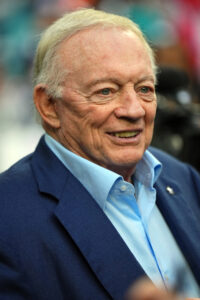 The Vikings’ landmark deal reset the WR guarantee market, and this booming market did not feature the kind of deals the Cowboys typically work out. Dallas has long preferred lengthier contracts — spanning at least five years — but receivers in recent offseasons had opted for three- and four-year extensions. Dallas both bent on term length, guarantees and eventually AAV.
The Vikings’ landmark deal reset the WR guarantee market, and this booming market did not feature the kind of deals the Cowboys typically work out. Dallas has long preferred lengthier contracts — spanning at least five years — but receivers in recent offseasons had opted for three- and four-year extensions. Dallas both bent on term length, guarantees and eventually AAV.
After previously never giving a wideout more than $60MM guaranteed, the Cowboys rewarded Lamb — after a weeks-long holdout — with $100MM locked in and $67MM at signing. Those numbers placed the 2020 first-rounder comfortably in second at the position.
As many big-ticket extensions now feature, a rolling guarantee structure offers Lamb year-out protection. His 2026 base salary ($25MM) shifts from an injury guarantee to a full guarantee in March 2025. Another $7MM for 2027 will shift from an injury guarantee to locked-in cash in 2026. The Cowboys used four void years packed with option bonuses to spread out Lamb’s cap hits; the extension saved the team more than $10MM in 2024 cap space.
[RELATED: Prescott Agreed To Four-Year, $240MM Extension On Sunday]
The Lamb holdout merely stood as a high-end undercard to Prescott’s main event. Dallas took this process to the wire — ahead of a soft Week 1 deadline — and is heading into rocky terrain with their ninth-year starter. After a rumor circulated indicating the Cowboys would be OK letting Prescott hit free agency next year, the team pushed back on it by insisting it wants to extend the former fourth-round find. Both team and player initially said a contract did not have to be done by Week 1, but Prescott later added that “it says a lot if it is or it isn’t.” This situation ran late into Saturday night, but Dak remains on the four-year, $160MM contract he signed in March 2021. As it stands, he is months from being one of the most coveted targets in free agency history.
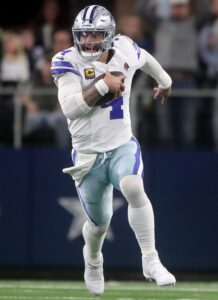 The Cowboys are battling uphill against their quarterback, having given him extraordinary leverage thanks to a three-offseason negotiation that afforded the QB no-trade and no-franchise tag clauses. Dallas later completed multiple restructures, ballooning Prescott’s 2024 cap hit to $55.13MM and creating a $40.13MM dead money hit — thanks to void years — if he is not extended by the start of the 2025 league year.
The Cowboys are battling uphill against their quarterback, having given him extraordinary leverage thanks to a three-offseason negotiation that afforded the QB no-trade and no-franchise tag clauses. Dallas later completed multiple restructures, ballooning Prescott’s 2024 cap hit to $55.13MM and creating a $40.13MM dead money hit — thanks to void years — if he is not extended by the start of the 2025 league year.
Unless the 30-year-old passer receives a monster offer — the $60MM-per-year number has come up often — there is no reason for him to pass on approaching free agency. He did not shut down that path this summer.
Maligned due to his place as the centerpiece player on a team known for late-season shortcomings, Prescott is nevertheless coming off a second-team All-Pro season. The MVP runner-up bounced back from a down 2022 season, and if Kirk Cousins fetched $100MM in practical guarantees ahead of an age-36 season following Achilles surgery, Prescott would be in position to reset a quarterback market that has incrementally climbed to the $55MM-per-year place. As should be expected, Dak is targeting a deal north of that $55MM-AAV number.
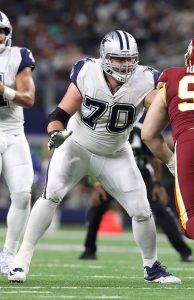 Unless the Cowboys are keen on starting over at QB with a veteran team — this worked out well for the post-Super Bowl 50 Broncos — after Jerry Jones’ 82nd birthday, they will need to again give in. A contract flooded with guarantees and early vesting dates will almost definitely be required to keep Dak from testing the market, as a $60MM-plus-AAV accord would certainly await in 2025 if he plays out his contract year.
Unless the Cowboys are keen on starting over at QB with a veteran team — this worked out well for the post-Super Bowl 50 Broncos — after Jerry Jones’ 82nd birthday, they will need to again give in. A contract flooded with guarantees and early vesting dates will almost definitely be required to keep Dak from testing the market, as a $60MM-plus-AAV accord would certainly await in 2025 if he plays out his contract year.
Jones has received steady criticism for letting his top players’ values increase by waiting on extensions, but this is a unique contract to complete. The sides are believed to be in agreement on term length, at least, and the Cowboys do have exclusive negotiating rights until mid-March. Though, the closer we get to free agency, the more challenging the mission becomes for the team.
The Cowboys’ longest-tenured player now that Tyron Smith is gone, Martin still earned All-Pro acclaim despite admitting he was not at his best following a holdout last year. Martin is a future first-ballot Hall of Famer who secured guarantees over his six-year contract’s final two seasons, but this restructure will inflate the dead money total the Cowboys would absorb if the soon-to-be 34-year-old blocker is not re-signed in 2025. The 11th-year veteran is considering retirement after this season. If Martin retires, the Cowboys would be tasked with replacing an all-time guard great and face a $26.5MM dead cap hit next year.
Free agency additions:
- Eric Kendricks, LB. One year, $3MM ($2.5MM guaranteed)
- Linval Joseph, DT. One year, $2.5MM ($2MM guaranteed)
- Ezekiel Elliott, RB. One year, $2MM ($1.63MM guaranteed)
- Dalvin Cook, RB. Practice squad
- Carl Lawson, DE. Practice squad
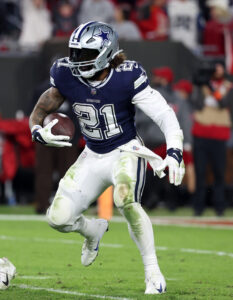 Elliott now counts more than $8MM on Dallas’ payroll; the other $6MM comes from dead money associated with the Cowboys ditching his previous contract. Once given a six-year, $90MM deal to anchor Dallas’ offense, Elliott is now 29 and enters the season with by far the most touches (2,421) among active backs. The Cowboys did miss two-time rushing champion’s nose for the end zone last season, but his presence atop the depth chart creates concern.
Elliott now counts more than $8MM on Dallas’ payroll; the other $6MM comes from dead money associated with the Cowboys ditching his previous contract. Once given a six-year, $90MM deal to anchor Dallas’ offense, Elliott is now 29 and enters the season with by far the most touches (2,421) among active backs. The Cowboys did miss two-time rushing champion’s nose for the end zone last season, but his presence atop the depth chart creates concern.
Even as Elliott closed the Bill Belichick era as the Patriots’ starting running back, his New England one-off produced a bottom-10 rushing yards over expected mark (minus-71). The Cowboys pursued Zack Moss in free agency but saw him join the Bengals on a two-year, $8MM deal. Dallas did not chase Derrick Henry this offseason, and rumblings about an Elliott reunion — a topic that came up last year even after Dallas made him a post-June 1 cut — emerged before March’s end.
It remains odd the Cowboys did not at least add a late-round RB flier of sorts, instead re-signing Rico Dowdle and bringing in Cook, who enters the season with the fifth-most touches (1,585) among active RBs. Following four straight 1,100-yard rushing seasons in Minnesota, Cook saw his play nosedive in New York. The would-be Jets bridge back to Breece Hall ended up being released. The Cowboys can elevate Cook to their active roster, but an Elliott-Dowdle-Cook committee — in 2024, at least — may well be the NFL’s least formidable backfield.
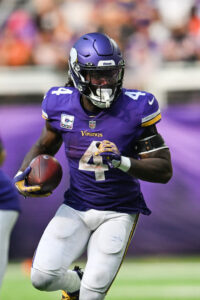 The reunion theme continued on defense. While Kendricks and Joseph have no previous Cowboys ties, they both played several seasons under new DC Mike Zimmer. Each served as part of the Vikings’ defense-powered core in the 2010s, helping the team to three playoff berths during Zimmer’s tenure.
The reunion theme continued on defense. While Kendricks and Joseph have no previous Cowboys ties, they both played several seasons under new DC Mike Zimmer. Each served as part of the Vikings’ defense-powered core in the 2010s, helping the team to three playoff berths during Zimmer’s tenure.
Joseph, 35, will be charged with helping out a Dallas run defense that ranked 16th last season — but one that allowed Aaron Jones to run wild in the seminal wild-card loss. The recent Chargers and Bills D-tackle, Joseph has made 170 career starts. He will most likely work as a situational player tasked with aiding Dallas ground deterrence.
Kendricks, 32, comes over after becoming a cap casualty (by the Vikings and Chargers) in each of the past two seasons. The former Zimmer mainstay had a deal in place to be the 49ers’ bridge to Dre Greenlaw, but Kendricks backtracked on that commitment and joined a Cowboys team promising more opportunities. With the Cowboys moving undersized LB Markquese Bell back to safety, cutting Leighton Vander Esch and seeing 2023 third-round pick DeMarvion Overshown coming back from an ACL tear, Kendricks is suddenly needed again.
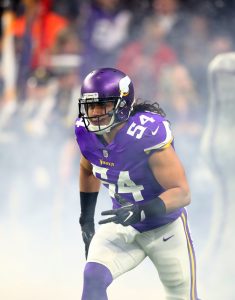 Sam Williams‘ training camp ACL tear prompted the Cowboys to conduct a D-end workout. The 2022 second-rounder’s role was to increase — following the Dorance Armstrong and Dante Fowler Commanders defections — but the Cowboys were forced to look elsewhere for rotational aid.
Sam Williams‘ training camp ACL tear prompted the Cowboys to conduct a D-end workout. The 2022 second-rounder’s role was to increase — following the Dorance Armstrong and Dante Fowler Commanders defections — but the Cowboys were forced to look elsewhere for rotational aid.
Lawson, 29, joined Cook in expressing frustration about his playing time last season with the Jets. Given a three-year, $45MM deal in 2021, the ex-Bengal pressure artist sustained an Achilles tear that year but bounced back with seven sacks and 24 QB hits in 2022. Last season, though, Robert Saleh benched Lawson — after a pay cut — en route to a paltry 101 snaps in his New York finale.
Re-signings:
- Jourdan Lewis, CB. One year, $2.83MM ($2.83MM guaranteed)
- Trent Sieg, LS. One year, $1.29MM ($1.15MM guaranteed)
- Chuma Edoga, T. One year, $1.29MM ($668K guaranteed)
- Rico Dowdle, RB. One year, $1.26MM ($200K guaranteed)
- C.J. Goodwin, CB. One year, $1.38MM ($168K guaranteed)
Lewis did well to recover from a career-threatening Lisfranc injury, with his 2022 setback representing a trend for Cowboys cornerbacks as of late. Trevon Diggs‘ ACL tear moved Lewis back into Dallas’ starting lineup, returning to his slot role and kicking DaRon Bland outside. Lewis, 29, is the Cowboys’ second-longest-tenured defender (behind only DeMarcus Lawrence); he has been with the team since it used a third-round pick on him in 2017.
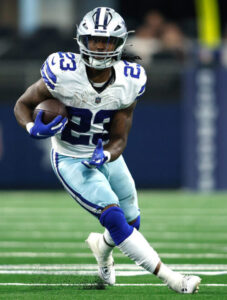 Pro Football Focus was not sold on Lewis’ move back into the starting lineup last year, grading him as a bottom-15 corner among regulars. The Cowboys, who have made multiple CB-for-CB trades over the past two offseasons, do not have too much choice right now — especially with Bland on IR to open the season. Lewis also held up for 16 games last season, marking an impressive comeback.
Pro Football Focus was not sold on Lewis’ move back into the starting lineup last year, grading him as a bottom-15 corner among regulars. The Cowboys, who have made multiple CB-for-CB trades over the past two offseasons, do not have too much choice right now — especially with Bland on IR to open the season. Lewis also held up for 16 games last season, marking an impressive comeback.
Dowdle’s career arc is among the more interesting involving an active RB. He went from 2020 Cowboys UDFA who had logged all of seven carries over his first three seasons to Tony Pollard‘s primary backup who handled 89 handoffs last season. Dowdle, 26, averaged 4.1 yards per carry last season, as he hung around after years off the radar during the Elliott-Pollard pairing’s run.
A former Jets third-rounder, Edoga worked as Tyron Smith‘s primary LT backup last season but also saw more than 100 snaps at left guard. The USC alum never panned out as a starter but has found a role as a swingman for multiple teams. Edoga, 27, landed on short-term IR to start the season due to a toe injury. Asim Richards and Matt Waletzko are the current backup tackles on Dallas’ 53-man roster.
Notable losses:
- Dorance Armstrong, DE
- Josh Ball, OL
- Tyler Biadasz, C
- Martavis Bryant, WR (released)
- Dante Fowler, DE
- Neville Gallimore, DT
- Michael Gallup, WR (post-June 1 cut)
- Stephon Gilmore, CB
- Johnathan Hankins, DT
- Noah Igbinoghene, CB
- Jayron Kearse, S
- Tony Pollard, RB
- Tyron Smith, LT
- Leighton Vander Esch, LB (released)
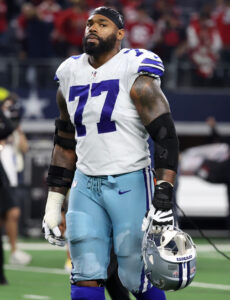 Probably on track to join Rayfield Wright as Cowboys tackles in the Hall of Fame one day, Smith landed on the 2010s All-Decade team but struggled to stay healthy for the past several years of his Dallas mega-contract. Smith missed 49 games from 2016-23, seeing most of his 2020 and 2022 seasons marred by injuries. That limited Smith on the open market. He landed a one-year, $6.5MM Jets deal that could be worth up to $20MM via incentives.
Probably on track to join Rayfield Wright as Cowboys tackles in the Hall of Fame one day, Smith landed on the 2010s All-Decade team but struggled to stay healthy for the past several years of his Dallas mega-contract. Smith missed 49 games from 2016-23, seeing most of his 2020 and 2022 seasons marred by injuries. That limited Smith on the open market. He landed a one-year, $6.5MM Jets deal that could be worth up to $20MM via incentives.
Smith said the Cowboys and Jets were his main options. He had expressed interest in staying, but a pre-free agency report declared a third Smith-Cowboys agreement unlikely. This offseason also wrapped one of the longest-running contracts in NFL history. The Cowboys gave Smith an eight-year extension in 2014. With injuries limiting the perennial Pro Bowler’s value, Smith never received a raise. He remained on that eight-year, $97.6MM deal for the rest of his time in Dallas. A missed opportunity, no doubt, as the tackle market ballooned without one of its best taking advantage.
Smith, 33, certainly rewarded the Cowboys (when healthy). He finished his Dallas run as a five-time All-Pro. This included a second-team honor last season. He will not be easy to replace.
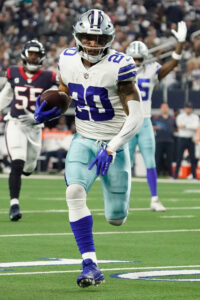 The Cowboys were not expected to bring back Pollard, after they had used the franchise tag in a sixth straight year to keep him. Dallas tagging Pollard hurt his value. Instead of hitting free agency as part of a less talented 2023 class after his best season, Pollard received the $10.1MM tag and submitted a less productive showing. The Cowboys aimed to use Pollard as a three-down back, resulting in an inefficient version of the explosive performer. This came despite a three-All-Pro O-line leading the way. Pollard, 27, fetched a three-year, $21.75MM ($10.49MM guaranteed) Titans deal during a frenzied day of RB movement.
The Cowboys were not expected to bring back Pollard, after they had used the franchise tag in a sixth straight year to keep him. Dallas tagging Pollard hurt his value. Instead of hitting free agency as part of a less talented 2023 class after his best season, Pollard received the $10.1MM tag and submitted a less productive showing. The Cowboys aimed to use Pollard as a three-down back, resulting in an inefficient version of the explosive performer. This came despite a three-All-Pro O-line leading the way. Pollard, 27, fetched a three-year, $21.75MM ($10.49MM guaranteed) Titans deal during a frenzied day of RB movement.
Though, Pollard was coming off a broken leg and tightrope surgery on his ankle. It is possible the Titans will see the former fourth-round find return to form now more than 18 months removed from the injury. The Cowboys not wanting to pay Pollard at that rate — even after the RB may have considered a sub-market-value deal to stay in Dallas — is understandable, but their RB situation certainly appears worse off without the five-year contributor. With the Cowboys not ready to pay Zack Moss $4MM per year, Pollard staying was probably a non-starter given the Tennessee offer.
The Cowboys then lost three regulars — Biadasz, Armstrong, Fowler — to Dan Quinn‘s Commanders operation. A former fourth-round pick, Biadasz received the most guaranteed money ($17.7MM) of the trio. The center started three seasons with the Cowboys. A fallback option after Randy Gregory‘s 11th-hour negotiation snafu, Armstrong played well as Dallas’ third DE behind Parsons and DeMarcus Lawrence. He combined for 16 sacks, albeit with less impressive pressure stats, from 2022-23. Fowler, who did not see as much playing time, followed Quinn from Atlanta to Dallas and will be a rotational Washington rusher.
 Dallas’ 2018 draft class began to dovetail due to the health setbacks involving Vander Esch and Gallup. The team saw Vander Esch look like a difference-making linebacker as a rookie, when he earned second-team All-Pro honors. But the neck condition the off-ball defender carried ended up causing limitations. Although Vander Esch re-signed on a two-year, $8MM deal in 2023, the Cowboys moved on after a season-ending neck injury.
Dallas’ 2018 draft class began to dovetail due to the health setbacks involving Vander Esch and Gallup. The team saw Vander Esch look like a difference-making linebacker as a rookie, when he earned second-team All-Pro honors. But the neck condition the off-ball defender carried ended up causing limitations. Although Vander Esch re-signed on a two-year, $8MM deal in 2023, the Cowboys moved on after a season-ending neck injury.
Both Vander Esch and Gallup subsequently retired. Gallup, a former third-rounder, zoomed to an 1,100-plus-yard 2019 season — before Lamb’s arrival — and despite sustaining a late-season ACL tear in 2021, did enough to warrant a five-year, $57.25MM deal to stay. The Cowboys chose a cheaper Gallup contract over keeping Cooper’s $20MM-per-year deal on the books. That proved a mistake, as the team has continued to search for a reliable WR2. Gallup did not eclipse 500 receiving yards in any of the past three seasons, and his Raiders stint did not last long.
The Cowboys are on the hook for $4.35MM (2024) and $8.7MM (’25) Gallup dead money figures from the March release. Jalen Tolbert, a 2022 third-round pick who has not shown much so far, is on track to replace Gallup alongside Lamb and Brandin Cooks.
Gilmore, 34 this month, expressed interest in re-signing with the Cowboys, who traded for him last year. The team did not reciprocate that interest, and Gilmore became closely connected to the Panthers for months. The decorated cornerback ended up with the Vikings on a one-year, $7MM deal.
Draft:
- Round 1, No. 29 (from Lions): Tyler Guyton (T, Oklahoma) (signed)
- Round 2, No. 56: Marshawn Kneeland (EDGE, Western Michigan) (signed)
- Round 3, No. 73 (from Vikings through Lions): Cooper Beebe (G, Kansas State) (signed)
- Round 3, No. 87: Marist Liufau (LB, Notre Dame) (signed)
- Round 5, No. 174: Caelen Carson (CB, Wake Forest) (signed)
- Round 6, No. 216: Ryan Flournoy (WR, Southeast Missouri State) (signed)
- Round 7, No. 233 (from Raiders): Nathan Thomas (T, Louisiana-Lafayette) (signed)
- Round 7, No. 244: Justin Rogers (DT, Auburn) (signed)
 The notion of moving Tyler Smith back outside surfaced early in the offseason, but it did not gain much traction. Dallas became linked to tackles in a tackle-rich draft, and they let their grades determine a first-round decision. The Cowboys did not have 24 first-round grades on players and hoped a team would trade into their slot; the Lions took them up on that interest, climbing up five spots to draft cornerback Terrion Arnold. The Cowboys slid to 29 and chose Guyton — the last of the eight tackles taken in Round 1 this year. Guyton will immediately step into Dallas’ LT role.
The notion of moving Tyler Smith back outside surfaced early in the offseason, but it did not gain much traction. Dallas became linked to tackles in a tackle-rich draft, and they let their grades determine a first-round decision. The Cowboys did not have 24 first-round grades on players and hoped a team would trade into their slot; the Lions took them up on that interest, climbing up five spots to draft cornerback Terrion Arnold. The Cowboys slid to 29 and chose Guyton — the last of the eight tackles taken in Round 1 this year. Guyton will immediately step into Dallas’ LT role.
One of many tackles in this year’s first round set to change positions, Guyton will move from Oklahoma right tackle to replacing Tyron Smith. No pressure. Guyton matches Smith’s 6-foot-8 frame but will make a move into an NFL starting lineup without a first- or second-team all-conference honor on his college resume. The Cowboys plugged Smith in immediately back in 2011, though Guyton’s predecessor began his career at RT. Dallas’ Will McClay-overseen drafts have produced many first-round gems. With a key positional vacancy to fill, the team needs its personnel honcho to hit on this selection as well.
Kneeland met with half the NFL on “30” visits but enters the NFL with light sack production. The MAC product never topped 4.5 in a season, but he generated early interest thanks to accumulating 36 pressures last season. The 267-pound edge rusher also combined for 26 tackles for loss from 2021-23. With Sam Williams out, Kneeland suddenly steps into the role Dorance Armstrong played.
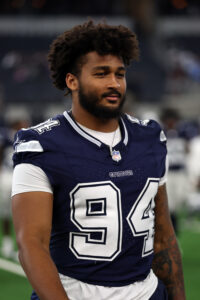 With the No. 73 overall pick obtained in the Arnold trade, the Cowboys chose a player they are planning to plug in at center. Beebe eventually beat out Brock Hoffman for the center job, doing so despite taking second-team reps during much of the Cowboys’ preseason practices.
With the No. 73 overall pick obtained in the Arnold trade, the Cowboys chose a player they are planning to plug in at center. Beebe eventually beat out Brock Hoffman for the center job, doing so despite taking second-team reps during much of the Cowboys’ preseason practices.
Turning to two rookies up front will be a risk for the Cowboys, but another Biadasz contract would have been difficult to slot. The team not only just paid CeeDee Lamb, but it will undoubtedly be preparing a Tyler Smith extension. Beebe’s third-round contract will accompany that guard accord. He earned Big 12 Offensive Lineman of the Year acclaim in back-to-back seasons but played tackle and guard at Kansas State.
Jerry Jones had labeled the Cowboys as high on Texas running back Jonathon Brooks, and a post-draft report indicated Dallas was interested in USC’s MarShawn Lloyd. The team ended up not being in position to land Brooks, for whom the Panthers traded up to No. 46. Dallas chose Beebe over Lloyd and finished the draft with no running back choice.
Trades:
- Acquired CB Andrew Booth from Vikings in exchange for CB Nahshon Wright
- Obtained DT Jordan Phillips, 2026 seventh-round from Giants for conditional 2026 sixth-rounder
- Dealt TE Peyton Hendershot to Chiefs for conditional 2026 seventh-round pick
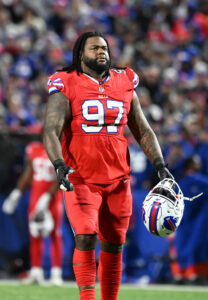 A year after the Cowboys sent Kelvin Joseph to the Dolphins for Noah Igbinoghene, they completed another CB-for-CB swap. Booth made Dallas’ 53-man roster, while Wright only landed on Minnesota’s practice squad. Once viewed as a first-round talent, Booth — a 2022 second-rounder — did not pan out with the Vikings. The Cowboys have the Clemson alum contracted through the 2025 season and have him as one of six active-roster CBs.
A year after the Cowboys sent Kelvin Joseph to the Dolphins for Noah Igbinoghene, they completed another CB-for-CB swap. Booth made Dallas’ 53-man roster, while Wright only landed on Minnesota’s practice squad. Once viewed as a first-round talent, Booth — a 2022 second-rounder — did not pan out with the Vikings. The Cowboys have the Clemson alum contracted through the 2025 season and have him as one of six active-roster CBs.
Phillips, 32 this month, reunites with Joseph as Buffalo-to-Dallas imports. The Cowboys eyed DTs during training camp and brought in Phillips to help against the run. The Giants and Cowboys agreed to their intra-NFC East swap before the Eagles and Commanders finalized the Jahan Dotson trade.
The 10th-year veteran must be on the Cowboys’ gameday roster for two games for the picks to transfer. PFF rated Phillips as the league’s second-worst interior D-lineman last season. The Bills turned to Phillips as a starter following DaQuan Jones‘ torn pec, giving him nine starts before he finished the season on IR.
Other:
- Did not extend HC Mike McCarthy‘s contract
- DC Dan Quinn landed Commanders’ HC job; Mike Zimmer named replacement
- Secondary coach Joe Whitt Jr. became Commanders’ DC; D-line coach Aden Durde joined Seahawks as DC
- Added Paul Guenther, Greg Ellis to coaching staff
- Blocked Commanders from interviewing Al Harris, Lunda Wells
- Exercised DE Micah Parsons‘ $21.32MM fifth-year option; declined QB Trey Lance‘s $22.41MM option
- Placed CB DaRon Bland on IR
 Excluding a debut season that featured Prescott’s broken ankle, McCarthy is 36-15 as the Cowboys’ HC. His team ran into better 49ers squads, missing Pollard in the second half of the 2022 divisional-round matchup. Of all the Cowboys’ January letdowns post-Super Bowl XXX, it is difficult to top the recent wild-card debacle. It became a sticking point for Jones, who simply responded “Green Bay” when asked about his coach’s lame-duck status this summer.
Excluding a debut season that featured Prescott’s broken ankle, McCarthy is 36-15 as the Cowboys’ HC. His team ran into better 49ers squads, missing Pollard in the second half of the 2022 divisional-round matchup. Of all the Cowboys’ January letdowns post-Super Bowl XXX, it is difficult to top the recent wild-card debacle. It became a sticking point for Jones, who simply responded “Green Bay” when asked about his coach’s lame-duck status this summer.
McCarthy, 60, is coaching in a contract year. Teams obviously avoid this, with player buy-in among the reasons lame ducks are extraordinarily rare in the modern NFL. As an uncertain future looms on multiple fronts in Dallas, McCarthy remains. Only two teams in the past 16 years have fired a head coach after a playoff berth. The Broncos split with John Fox after the 2014 season, and the Titans axed Mike Mularkey three years later. McCarthy’s Dallas tenure has gone better than Mularkey’s Tennessee stay, with Prescott delivering his best season after the ex-Packers HC returned to a play-calling role.
The fifth-year Dallas HC will need to prove it yet again, as Bill Belichick lurks. Jones said this winter he could work with Belichick, who famously held personnel say in New England, and the six-time Super Bowl winner is believed to be interested in Dallas and Philly. Surely this won’t come up regularly after McCarthy losses.
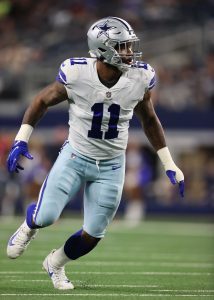 McCarthy’s first DC hire in Dallas, Quinn (along with Parsons) revitalized a unit that yielded the most points in franchise history in 2020. The Cowboys ranked in the top seven in scoring defense in each of Quinn’s three seasons, seeing his HC stock rebound post-Atlanta. While the Commanders do not appear to have ranked Quinn first among their choices, he became the pick and took Whitt — a Quinn Falcons staffer previously — as well. The Cowboys were interested in promoting Whitt for continuity purposes, but they veered in a more interesting direction.
McCarthy’s first DC hire in Dallas, Quinn (along with Parsons) revitalized a unit that yielded the most points in franchise history in 2020. The Cowboys ranked in the top seven in scoring defense in each of Quinn’s three seasons, seeing his HC stock rebound post-Atlanta. While the Commanders do not appear to have ranked Quinn first among their choices, he became the pick and took Whitt — a Quinn Falcons staffer previously — as well. The Cowboys were interested in promoting Whitt for continuity purposes, but they veered in a more interesting direction.
Zimmer returns to the NFL after two years away and is back in Dallas after nearly 20 years away. Zimmer spent 13 seasons on Dallas’ staff, working under Barry Switzer, Chan Gailey, Dave Campo and Bill Parcells. This will be the former Vikings HC’s second go-round as Cowboys DC, having held that title under both Campo and Parcells from 2000-06. Zimmer, 68, helmed three Vikings playoff teams — each carrying different starting QBs — built around defense. Once Whitt committed to Washington, Jones had wanted to hire a former HC to replace Quinn, having interviewed Ron Rivera and Rex Ryan for the gig as well.
Quinn took auxiliary pieces to Washington, but Dallas’ defensive engine remains. Parsons’ option became a no-doubt call years ago, and if this offseason is a guide, the Cowboys will probably be set for a complex negotiation with their top player next year. Parsons, 25, said he was both not mandating a 2024 extension commence and expects to become the NFL’s highest-paid non-QB when he does sign a second contract.
 More cap growth will push Parsons’ ask toward $40MM per year, as standouts like Myles Garrett and T.J. Watt may well be coming back to the table in 2025. With Lamb already tied with Nick Bosa as the league’s second-highest-paid non-QB, a Parsons payment will test Dallas’ depth in a way few teams have been tested in the cap era. The Cowboys would have a 2026 franchise tag available, but they have done well — regardless of how bumpy the roads have been en route — to extend their cornerstones.
More cap growth will push Parsons’ ask toward $40MM per year, as standouts like Myles Garrett and T.J. Watt may well be coming back to the table in 2025. With Lamb already tied with Nick Bosa as the league’s second-highest-paid non-QB, a Parsons payment will test Dallas’ depth in a way few teams have been tested in the cap era. The Cowboys would have a 2026 franchise tag available, but they have done well — regardless of how bumpy the roads have been en route — to extend their cornerstones.
Again unable to beat out Cooper Rush for the Cowboys’ QB2 gig, Lance is on the verge of being one of the biggest draft busts in NFL history. The 49ers have managed to survive their mistake, though a significant “what if?” is part of this equation due to the team giving up its 2022 and ’23 first-round picks. Lance’s $5.3MM Cowboys base salary is guaranteed.
The team at least gave Lance plenty of preseason reps, but the former No. 3 overall pick is not a viable candidate to take over in the event Prescott leaves as a 2025 free agent. Lance is instead poised to join 2021 first-round classmates Zach Wilson and Mac Jones as once-promising prospects-turned-midlevel FAs.
Top 10 cap charges for 2024:
- Dak Prescott, QB: $55.13MM
- DeMarcus Lawrence, DE: $24.45MM
- Zack Martin, G: $15.5MM
- Trevon Diggs, CB: $14.12MM
- Terence Steele, RT: $11MM
- Brandin Cooks, WR: $10MM
- CeeDee Lamb, WR: $8.75MM
- Donovan Wilson, S: $7.37MM
- Micah Parsons, DE: $5.34MM
- Trey Lance, QB: $5.31MM
Jerry Jones raised the stakes for his head coach, and the team’s quarterback future will continue to come up until the team can resolve its Prescott situation. The Cowboys losing many productive starters — in an equation that will send out two rookie O-line starters to block for an uninspiring RB cadre — invites concern about how much they can improve on their 12-5 showings.
Of course, McCarthy does not need to prove he oversee a successful regular-season team. His future hinges on January, which has been a Cowboys thorn since Troy Aikman‘s final seasons. As their best players become much more expensive between this offseason and next, questions about big-picture contender viability are appropriate. Fortunately for this year’s team, Giants doubt exceeds anything coming out of Dallas and Washington has started a rebuild. Set to battle the Eagles for NFC East supremacy once again, the Cowboys will not lack for attention as we hit Year 5 of the McCarthy-Dak era.
Solid 11 win team
The Boys might got undefeated if they can arrange to have Brad Allen referee all their games. link to youtube.com
Cowboys have had excellent OL and DL for a long time, which makes their players look better. That’s how you build a good football team. I commend them for that. But the owner playing GM and Public Relations isn’t very smart, and has something to do with why they can’t advance in the playoffs. No reputable HC or front office people want to work in an organization where the owner has his hands in everything. Jerry built an empire, but the irony is they’ll probably never win a SB because of him. The irony.